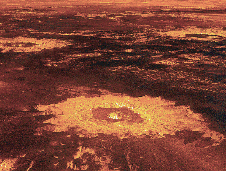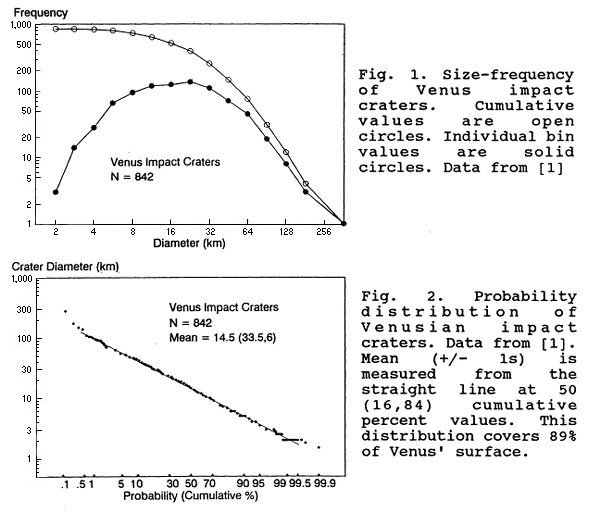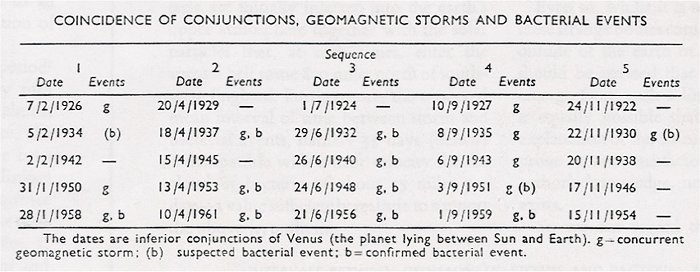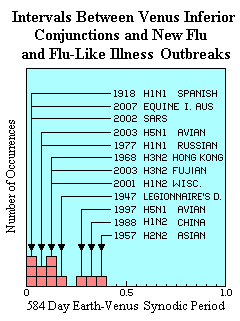Is Venus A New Planet?
Robert S. Fritzius
Shade Tree Physics
Presented as Poster No. 65.01 at theAmerican Astronomical Society - Division for Planetary Sciences
annual meeting at Orlando, FL, October 7-12, 2007
This is a HTML version of a PowerPoint Presentation
Missing Venusian Impactors?

Venusian Impact Crater
NASA - Magellan
Magellan researchers found only 842 impact craters on 89% of the Venus
surface mapped through orbit 2578.(1) About 5,000 were expected. The
size-density distribution of large craters (diameters >= 35 km)
indicates an average age (for the craters) of about 0.5 Ga. It was
estimated that about 98% of the small craters (diameters <= 35 km) are
missing. This was presumably because they had been "filtered out" by
the thick Venusian atmosphere.

But
Figures 1 and 2 from an article by D.H Speidel show that there may not, in fact, be any missing small craters on Venus.(2)

Speidel's interpretation of the crater data is that instead of "missing craters," it is the impactors which are missing.
A straightforward but unorthodox way of resolving the missing impactors problem, would be for Venus, as a planet, to be a whole lot younger (than the 0.5 Ga) than is generally believed.
In 1950, Immanuel Velikovsky, Russian psychiatrist, turned catastrophist, argued that Venus is indeed much younger than generally believed.(3) Based on what amounted to a psychoanalysis of ancient global traumatic memories, he concluded that the planet Venus, the commonly identified source in the traumas, was born as a fission product of Jupiter about 3500 years ago. [Worlds in Collision (W. in C. ) 169-172.]
Velikovsky made a number of predictions about what he thought that ancient astronomy and history have to tell us about the strange things we are in the process of discovering in the solar system.
Velikovsky's Predictions
Velikovsky's predictions were scientific heresy in 1950, but most of them have been confirmed. This poster was going to include several of the predictions, along with cited references for their confirmations, but that information can be found by Googling "Velikovsky's predictions." Two predictions and one non-prediction prediction (about Life on Venus) are presented instead.
[1] The atmosphere of Venus, which was actually a remnant of Jupiter's atmosphere, will be rich in petroleum gases.



